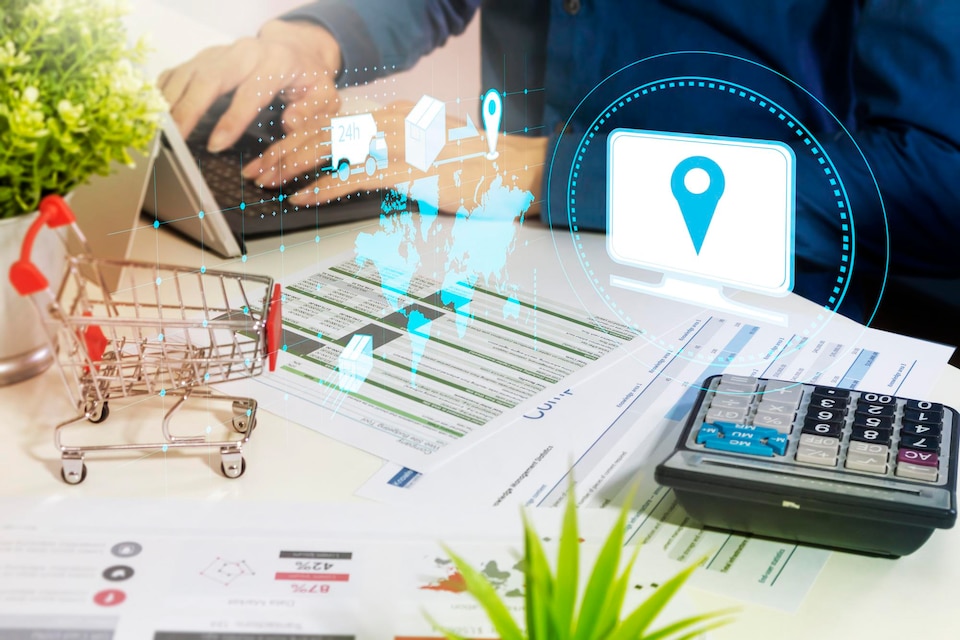Ecommerce applications have become vital tools for both organizations and consumers in the ever-changing field of digital commerce. These applications have gone a long way since their inception, now delivering a plethora of features and functionality to meet the different demands of online consumers. The topic that continues to pique the interest of IT fans and businesses is, “How far can ecommerce apps stretch their capabilities?” In this blog, we will dig into the realm of ecommerce app development and examine the boundaries they have previously broken as well as those they are about to break.
The Evolution of Ecommerce Apps
Since their beginning, ecommerce applications have seen tremendous evolution. Initially, these were simple platforms that allowed customers to browse product catalogs and make online purchases. Fast forward to now, and they have grown into multidimensional systems with a myriad of features and benefits. Let’s follow this progression and see how far ecommerce applications have come.
- User Experience Enhancement
The emphasis on user experience (UX) was one of the first developments in ecommerce app development. Designers and developers recognized the need to build user interfaces that are intuitive, aesthetically appealing, and easy to use. This resulted in improved customer satisfaction, faster loading times, and smoother navigation.
- Mobile Commerce Revolution
The spread of smartphones changed the face of ecommerce. Ecommerce applications reacted to this trend by making their platforms mobile-friendly. This mobile-first strategy not only increased ecommerce’s reach but also brought new capabilities such as barcode scanning, smartphone payments, and push notifications.
- Personalization and Recommendation Engines
To provide highly personalized purchasing experiences, ecommerce applications have used the power of data analytics and machine learning. Recommendation engines examine user behavior and preferences to recommend goods that are most likely to appeal to specific customers. This not only increases sales but also user engagement.
- Augmented Reality (AR) and Virtual Reality (VR)
By using AR and VR technology, certain ecommerce apps have pushed the frontiers of shopping. Customers can virtually try on items, visualize furniture in their homes, and even experience things before making a purchasing choice thanks to these capabilities. This interactive shopping experience blends physical and internet retail.
- Social Commerce Integration
Ecommerce apps have jumped on the social media bandwagon by including social commerce capabilities. Users may now purchase straight from their favorite social media channels, utilizing their social connections and the suggestions of influencers. This integration ushered in a new era of social purchasing.
Stretching Boundaries Further
After discussing the growth of ecommerce applications, it’s time to look ahead and examine the boundaries they’re continuously pushing. These applications have enormous promise in the future, and here are some of the territories they are prepared to conquer:
- Hyper-Personalization
Ecommerce experience personalisation will reach new heights. To provide highly personalized product suggestions, machine learning algorithms will analyze an even broader variety of customer data, including social media activity and geography. Apps will understand their users’ preferences almost as well as they do.
- Enhanced Augmented Reality
AR is poised to become an essential component of ecommerce. Improved augmented reality technology will allow people to engage with things in increasingly more realistic ways, such as digitally trying on garments with astounding precision or visualizing furniture in their homes with extraordinary realism.
- Blockchain and Cryptocurrency Integration
As cryptocurrencies gain popularity, ecommerce applications will almost certainly use blockchain technology for safe and transparent transactions. This might make traditional payment channels obsolete, making internet buying more efficient and safe.
- Sustainability and Ethical Shopping
Ecommerce applications will be critical in encouraging sustainable and ethical consumption. They will give thorough information regarding the supply chain of a product, including its environmental effect and labor practices. Consumers will be able to make better informed decisions.
- Social Commerce Evolution
Social commerce will progress beyond simply listing products on social media networks. Apps will integrate with social networks seamlessly, allowing users to participate in live shopping events, interactive product demos, and direct connections with influencers and businesses.
- AI-Driven Customer Service
Chatbots and virtual assistants powered by AI will handle customer service enquiries more efficiently. They will not only answer ordinary queries quickly, but will also manage more sophisticated interactions, such as processing returns or settling disputes.
- Instant Gratification
The desire for rapid pleasure will drive delivery and fulfillment improvements. Ecommerce software will investigate possibilities such as drone delivery, hyper-local warehousing, and real-time inventory management to provide same-day or even same-hour delivery.
- Ecommerce Ecosystem Integration
Ecommerce apps will be smoothly integrated into a larger digital environment. Partnerships with smart home gadgets, automotive infotainment systems, and other linked platforms are examples of this. Customers will be able to shop from multiple touchpoints inside their digital life.
Challenges on the Horizon
While ecommerce applications have enormous promise, numerous difficulties must be addressed as they continue to push their boundaries:
- Privacy Concerns
As ecommerce applications collect more data to improve personalisation, privacy issues will grow. Finding a happy medium between personalisation and user privacy will be an ongoing problem.
- Cybersecurity Threats
Cybersecurity risks will get more sophisticated as ecommerce systems become more complicated. To secure user data and financial transactions, apps will need to invest considerably in security measures.
- Regulatory Compliance
Ecommerce software will need to react fast to the ever-changing world of digital commerce rules. Compliance with data protection laws and other standards will continue to be a difficulty.
- Environmental Impact
Concerns have been expressed concerning the environmental effect of ecommerce’s fast expansion. To address this issue, apps will need to investigate eco-friendly packaging, efficient delivery, and sustainable practices.
- Accessibility
Ecommerce applications must make their platforms accessible to people with impairments. As online shopping grows in popularity, meeting accessibility criteria will become increasingly important.
Conclusion
Ecommerce applications have gone a long way since their humble origins, and they are still evolving at a quick rate. What they are capable of accomplishing appears to be practically unlimited. These applications are ready to alter the way we purchase online, from hyper-personalization to futuristic technologies like AR, VR, and blockchain integration.
However, when these boundaries are pushed, ecommerce applications must also handle crucial issues such as privacy concerns, cybersecurity dangers, and environmental effects. The capacity of ecommerce applications to evolve while preserving customer trust and happiness will influence their future.
One thing is clear in this ever-expanding digital frontier: ecommerce applications will continue to increase their capabilities, providing users with greater convenience, personalisation, and immersive experiences than ever before. The adventure to push the boundaries of ecommerce has only just begun, and it promises to be thrilling.





